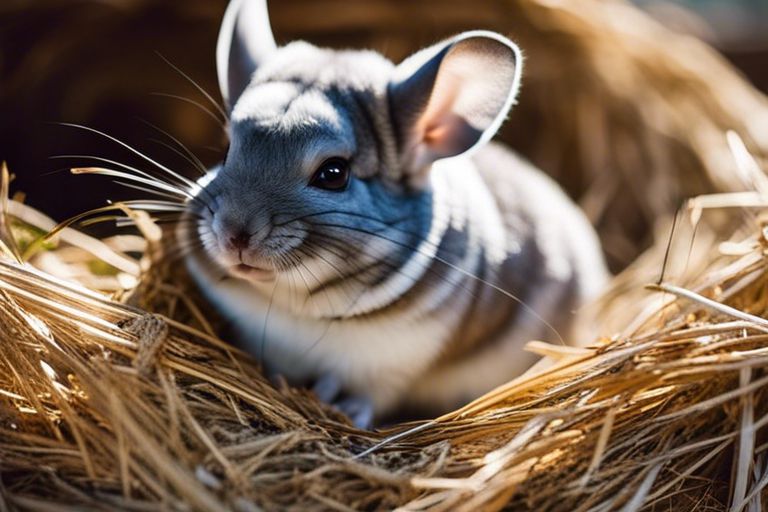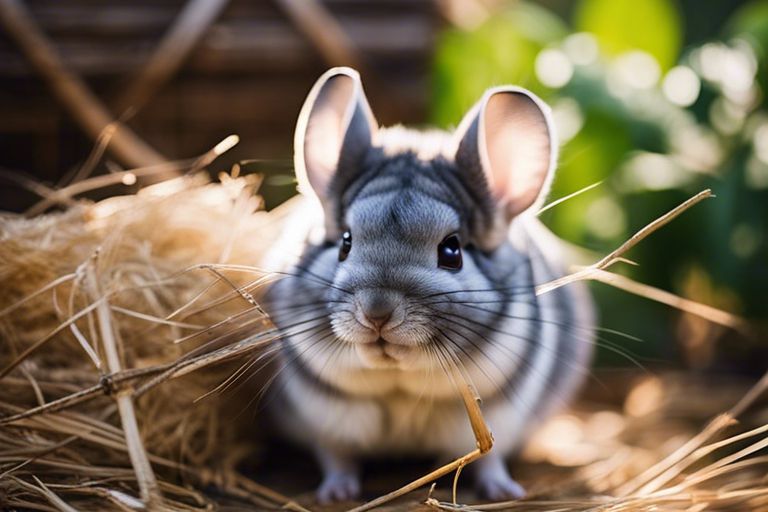Oftentimes, chinchilla owners may be puzzled by their pet’s sudden urge to create a nest. This behavior, however, is perfectly natural for these small rodents. Chinchillas are known to be solitary animals in the wild, and they often exhibit nesting behavior as a way to establish their own territory and create a sense of security. Additionally, chinchillas are also known to be highly territorial, and creating a nest allows them to mark their own space with their scent, making them feel more comfortable and secure in their environment. Understanding the reasons behind this behavior can help chinchilla owners provide the appropriate care and environment for their pets.
Key Takeaways:
- Instinctual Behavior: Chinchillas have a natural instinct to make nests for various purposes including reproduction, comfort, and security.
- Environmental Factors: Your chinchilla may be trying to create a nest in response to changes in its environment, such as temperature fluctuations, or in anticipation of giving birth.
- Attention to Health: Nesting behavior can also be a sign that your chinchilla is preparing to give birth, so it’s important to monitor their health and provide appropriate nesting materials if this is the case.
Understanding Chinchilla Nesting Habits
Even though chinchillas are commonly kept as pets, they still exhibit many of their natural instincts and behaviors. One such behavior is their tendency to make nests, which can be observed in both wild and domesticated chinchillas.
Even in captivity, chinchillas will often display nesting behavior, such as gathering materials and constructing a nest in a secluded area of their cage. Understanding the reasons behind this behavior can help chinchilla owners provide the best care for their pets.
Natural Nesting Instincts
Nesting is a natural behavior for chinchillas, who in the wild would use nesting materials to create cozy and safe spaces for giving birth and raising their young. This instinct to create a secure and comfortable environment is deeply ingrained in chinchilla behavior, and even pet chinchillas will feel the urge to engage in nest-building.
Chinchillas may also engage in nesting behavior as a way to regulate their body temperature. By burrowing into a nest made of appropriate materials, chinchillas can stay warm in cooler environments and cooler in warmer environments.
Indicators of Nest-Building Activity
An indication that a chinchilla is engaging in nest-building activity is the gathering of materials such as hay, straw, or shredded paper. Chinchillas will carry these materials to a specific location in their cage and begin constructing a nest by arranging the materials in a specific manner, often using their teeth and paws to create a cozy space.
This behavior is particularly common in female chinchillas, who may be preparing to give birth or who may be experiencing a pseudopregnancy. In these cases, the nesting behavior serves the purpose of creating a safe and comfortable environment for potential offspring, indicating that the chinchilla is ready to reproduce.
Factors Influencing Nesting Behavior
One of the primary factors influencing nesting behavior in chinchillas is their breeding season and reproductive cues. Additionally, their need for comfort and security also plays a significant role in their nesting behavior. Understanding these factors can help you provide the appropriate environment for your chinchillas to exhibit their natural nesting behaviors.
Breeding Season and Reproductive Cues
On the influence of breeding season, chinchillas have specific times of the year when they are more inclined to make a nest, such as during their reproductive season. During this time, female chinchillas may feel the urge to create a nest in preparation for giving birth, while males may also exhibit nesting behavior in response to reproductive cues in their environment.
Comfort and Security Needs
One of the primary motivations for chinchillas to make a nest is their need for comfort and security. In the wild, chinchillas seek out secluded areas to create nests as a way to feel protected and secure from potential threats. This natural instinct carries over into their behavior as pets, and providing them with the appropriate nesting materials and a secure environment can satisfy this need and promote their well-being.
A comfortable and secure nesting area can also contribute to the overall mental and physical health of chinchillas, reducing their stress levels and promoting natural behaviors. Providing them with soft bedding material, such as hay or shredded paper, can help create a cozy nest that meets their comfort needs.
Health and Safety Concerns
To ensure the health and safety of your chinchillas, it is important to understand the reasons behind their nesting behavior and provide them with the proper materials and environment to do so. Failure to address their nesting needs can lead to potential health concerns and safety hazards for your chinchillas.
Proper Nesting Material
Proper nesting material for chinchillas includes natural, non-toxic materials such as hay, shredded paper, or commercially available nesting materials specifically designed for small animals. These materials provide insulation and comfort for chinchillas while also allowing them to exhibit their natural nesting behaviors. It is important to regularly replenish the nesting material to ensure cleanliness and comfort for your chinchillas.
Proper nesting material not only supports the physical and mental well-being of your chinchillas, but it also reduces the risk of potential health concerns and safety hazards associated with inappropriate nesting materials.
Potential Dangers of Inappropriate Nesting
Inappropriate nesting materials such as synthetic fabrics, cedar shavings, or dusty materials can pose health risks to chinchillas. These materials may cause respiratory issues, skin irritation, or ingestion hazards for chinchillas. Additionally, improper nesting materials can lead to discomfort and stress for your chinchillas, impacting their overall well-being.
Concerns such as respiratory infections, skin issues, and digestive problems can arise from the use of inappropriate nesting materials, emphasizing the importance of providing chinchillas with the proper nesting environment.
Enhancing Your Chinchilla’s Environment
Unlike other small pets, chinchillas have specific environmental needs to thrive. Ensuring that your chinchilla has the right nesting options and monitoring and maintaining their nest are essential for their well-being.
Providing Optimal Nesting Options
With chinchillas being natural burrowers, it is important to provide them with suitable nesting options in their habitat. This can include providing a variety of nesting materials such as hay, shredded paper, and untreated wood shavings. Additionally, placing a nesting box or a small enclosed area within their cage can provide a safe and comfortable space for your chinchillas to build their nests.
It is also crucial to regularly clean and replace the nesting materials to ensure that the environment remains hygienic and comfortable for your chinchillas. Providing ample nesting options allows your chinchillas to exhibit natural nesting behaviors and contributes to their overall well-being.
Monitoring and Maintaining the Nest
The nesting behavior of chinchillas can indicate their well-being and comfort in their environment. It is essential to monitor their nest regularly to ensure that it is in good condition. The nesting materials should be free from contaminants and dampness, which can lead to health issues for your chinchillas.
The good news is that there are a variety of products available to help monitor and maintain your chinchillas’ nest. Options such as nesting material specifically designed for chinchillas and nest boxes with removable bedding trays can simplify the process of keeping the nest clean and comfortable for your pets.

Why Is My Chinchilla Making a Nest?
With this in mind, it is important to understand that chinchillas are natural nest builders, and they often do so in order to create a comfortable, safe space for themselves. This behavior is especially common in female chinchillas who are pregnant or have recently given birth. By creating a nest, a chinchilla is simply exhibiting its natural instincts to care for itself and any potential offspring. Therefore, it is important to provide your chinchilla with the appropriate materials to build its nest, such as hay or shredded paper, and to create a calm and quiet environment for it to feel secure in. Additionally, regular monitoring of your chinchilla’s nesting behavior can help ensure its health and well-being.
